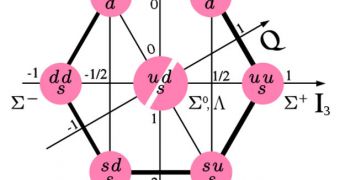For many years, astrophysicists have been searching for what they poetically call the missing mass of the Universe. Measurements they made of galaxies and clusters seem to indicate that not all normal matter in the Cosmos is where it should be. Experts have been wondering why statistical calculations and actual studies don't match up, and explanations as to why this happens have fallen short of explaining the phenomenon. Now, scientists propose a new idea that may finally help clear out the mystery.
The largest formations in the distinguishable Universe are superclusters, massive accumulations of galaxies that should, according to theoretical predictions, contain a large portion of all normal matter in the Cosmos. However, direct measurements of these structures, taken with X-ray telescopes, have shown that the formations contain a lot less mass than they should. One aspect that is extremely puzzling in this whole issue is the fact that the mass of the superclusters exerts such a large gravitational pull on normal, baryonic matter, that none can possibly escape.
So, the question goes, if the matter should be there, if it can't escape, then why can't we see it inside supercluster? A group of investigators from the Princeton University in New Jersey, led by scientists Bilhuda Rasheed, Neta Bahcall, and Paul Bode now believe they may have found they answer to this riddle. They say that astrophysicists have been looking in the wrong place all along. They say that focusing on the central parts of superclusters made experts ignore the outer fringes these regions of space have. The team believes that those locations contain vast amount of normal matter, particularly cosmic gas.
A report the team put together shows that the outer areas of superclusters may contain a large portion of the matter astrophysicists appeared to be missing. “This suggests that the baryons are not missing, they are simply located in cluster outskirts,” the experts write in a paper published in the online journal arXiv. “Upcoming observations should be able to detect these baryons,” the Princeton group adds. Detecting the distribution of matter in the Universe is essential for understanding how the Cosmos evolved following the Big Bang, Technology Review reports.

 14 DAY TRIAL //
14 DAY TRIAL //